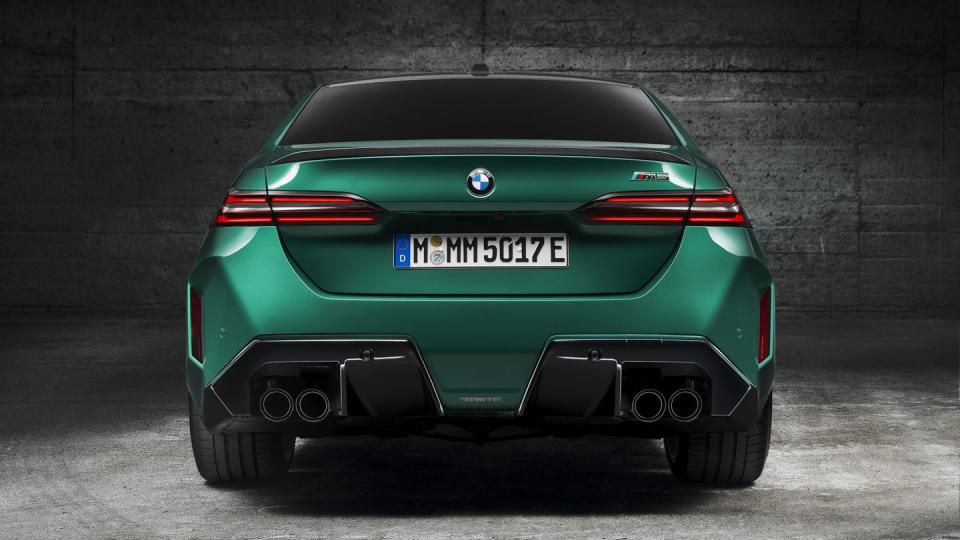New BMW M5's Plug-In-Hybrid System Weighs a Whopping 882 Pounds

The 2025 BMW M5 weighs a hefty 5390 pounds, and in an interview with Top Gear, the M division's boss said the hybrid system accounts for 882 pounds.
BMW defended the move, arguing that the weight penalty wasn't too much more than a standard hybrid system but with better performance gains.
The plug-in approach also allows the M5 to travel an estimated 25 miles in all-electric mode.
Despite the 2025 BMW M5's 717-horsepower rating from its twin-turbo 4.4-liter V-8 hybrid powertrain, the number that everyone is talking about instead is its 5390-pound curb weight. That represents a huge 1153-pound increase compared with a previous-generation M5 Competition. Now, thanks to a Top Gear interview with Frank van Meel, the head honcho of BMW's M division, we've learned more specifically where the majority of that massive weight gain came from.
The culprit, unsurprisingly, is the M5's 14.8-kWh lithium-ion battery, which powers a 194-hp electric motor that's integrated into the eight-speed automatic transmission. Van Meel told Top Gear that the battery weighs a whopping 882 pounds. Still, van Meel justified the move to a plug-in hybrid system.

“For us, it makes sense to ‘go the whole way’ and get the full advantage [of electrification] rather than accept setbacks," he argued. He noted that a normal hybrid system would add between 330 and 440 pounds anyway, and a plug-in system brings even better performance.
“Yes, it is possible to have a [temporary] boost function. But a plug-in hybrid gives continuous electric power output and energy," he noted. "This gives you more than a boost function. And it’s a bigger step [in performance] because we have 69 kilometers of electric range and 200 more horsepower. That’s more convincing.” The M5 can run in all-electric mode for around 25 miles, allowing it to enter the zero-emissions zones that are starting to crop up in major cities worldwide.
While adding weight is obviously detrimental to performance, van Meel also explained that BMW placed the weight in a way to lessen its impact on handling. “In motor racing, ballast is added to the floor of the car [to even up] balance of performance," he said. "That’s where we added our ‘ballast’–the battery is in the floor with a lower centre of gravity [than the previous M5].”

BMW did consider making the M5 all-electric, but ultimately decided that current battery technology wasn't advanced enough for the performance and range requirements of its customers. Top Gear also asked whether BMW had considered downsizing the engine, pointing to the Mercedes-AMG C63's controversial switch from V-8 power to a four-cylinder engine.
“You would be crazy to have a four-cylinder,” van Meel said. “Then [the choice is] a six-cylinder: which gives a very long front end. And we need a big gearbox to cope with [737 pound-feet]. So the V-8 is the best solution, because it is an emotional engine, but also compact.”
While the roar of a V-8 is certainly intoxicating, the M5's weight gain has garnered lots of criticism and means the super sedan will have to work that much harder to maintain its handling chops. We look forward to driving the latest M5 in the near future to explore just how much the extra heft has affected the M5's agility.
You Might Also Like

 Yahoo Autos
Yahoo Autos 